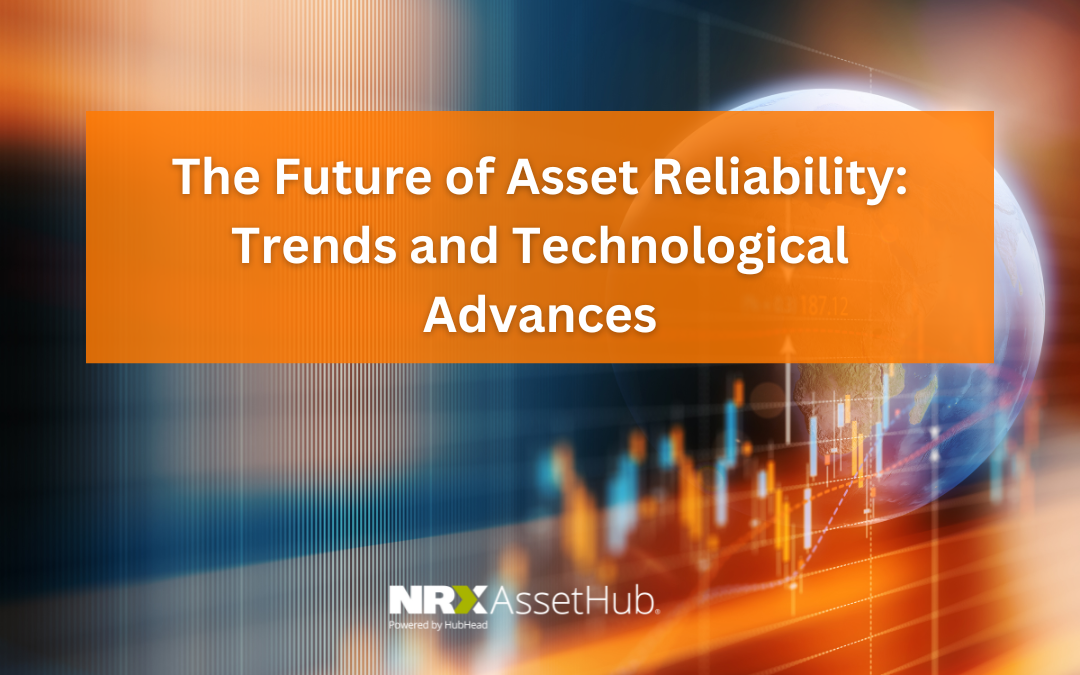In the ever-evolving landscape of industrial operations, the concept of asset reliability is undergoing a transformation fueled by technological advancements. As industries become increasingly reliant on machinery, equipment, and complex systems, the need to ensure uninterrupted operations and minimize downtime is more crucial than ever. The future of asset reliability is being shaped by innovative trends and cutting-edge technologies that promise to revolutionize the way organizations manage and maintain their assets. In this blog, we delve into some of the most significant trends and technological advances that are reshaping the landscape of asset reliability.

Predictive Analytics and AI:
The integration of predictive analytics and artificial intelligence (AI) is changing the game in asset reliability. By analyzing vast amounts of data from sensors, historical records, and real-time monitoring systems, AI algorithms can predict asset failures before they occur. This capability allows organizations to schedule maintenance proactively, minimizing unplanned downtime and optimizing resource allocation.
Digital Twins:
Digital twins are virtual replicas of physical assets, systems, or processes. By creating a digital twin of an asset, organizations can simulate its behavior in various scenarios. This technology enables predictive modeling, performance optimization, and risk assessment, facilitating better decision-making for asset maintenance strategies.
IoT and Connectivity:
The Internet of Things (IoT) is enhancing asset reliability through connected sensors and devices. These IoT-enabled assets provide real-time data on their performance, health, and usage patterns. This data empowers organizations to monitor assets remotely, identify anomalies, and make informed maintenance decisions.
Augmented Reality (AR) for Maintenance:
AR technology is being leveraged to provide maintenance personnel with real-time information and visual guidance during repairs and inspections. AR overlays digital information onto the physical environment, enabling technicians to access instructions, schematics, and maintenance history hands-free.
Blockchain for Transparency:
Blockchain technology is finding applications in asset reliability by enhancing transparency and traceability. In supply chain management, for example, blockchain can verify the authenticity of spare parts and ensure that they meet quality standards, reducing the risk of using subpar components.
Condition-Based Monitoring:
Advancements in sensor technology allow for more precise condition-based monitoring of assets. Sensors can track variables like temperature, vibration, and fluid levels in real-time, providing insights into asset health and enabling timely interventions.
Robotics and Drones:
Robots and drones are being employed for asset inspections in hard-to-reach or hazardous locations. These technologies can perform detailed assessments, capture images, and relay data to maintenance teams without endangering human personnel.
Cloud-Based Maintenance Management Systems:
Cloud technology is revolutionizing maintenance management by centralizing data storage, analysis, and collaboration. Cloud-based systems allow maintenance teams to access critical information from anywhere, facilitating seamless communication and decision-making.
Sustainability and Reliability:
Sustainability considerations are becoming integral to asset reliability strategies. Sustainable practices, such as energy-efficient operations and reduced environmental impact, are aligning with reliability goals, ensuring the longevity of assets and minimizing waste.
Human-AI Collaboration:
The future of asset reliability involves a harmonious collaboration between humans and AI. While AI can analyze data and predict failures, human expertise remains crucial in interpreting results, making strategic decisions, and ensuring that maintenance strategies align with business objectives.

In conclusion, the future of asset reliability is marked by an exciting fusion of technological innovation and industry trends. The convergence of predictive analytics, AI, IoT, AR, and other advanced technologies is poised to reshape the way organizations manage their assets. By embracing these trends, organizations can achieve higher levels of operational efficiency, minimize downtime, and unlock new opportunities for sustainable growth in a competitive landscape. The future of asset reliability is not just about maintenance; it’s about leveraging technology to unlock the full potential of assets and drive success in the digital age.
Need Help with Your Asset Reliability?
HubHead’s benchmarking service can provide valuable support. Our experienced consultants have helped numerous companies achieve excellence through comprehensive benchmarking analysis that leverages various benchmark types.
Contact us today by following the links below to download our brochure or book a meeting with one of our consultants.

Benchmarking Spare Parts Lifecycle Management: Strategies for Optimal Asset Performance
Planning for a Seamless Data Migration: Key Steps and Considerations
Revamping Maintenance Processes: How Benchmarking Boosts Efficiency

Share this article



